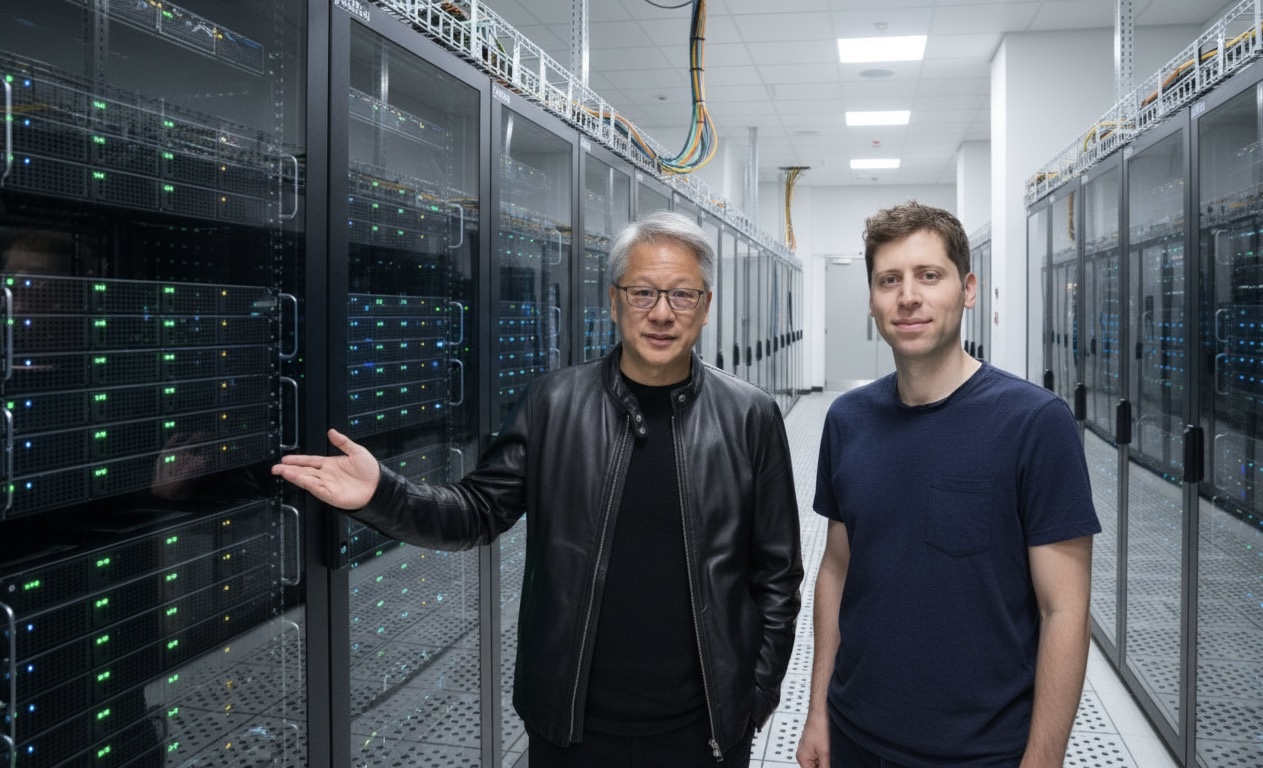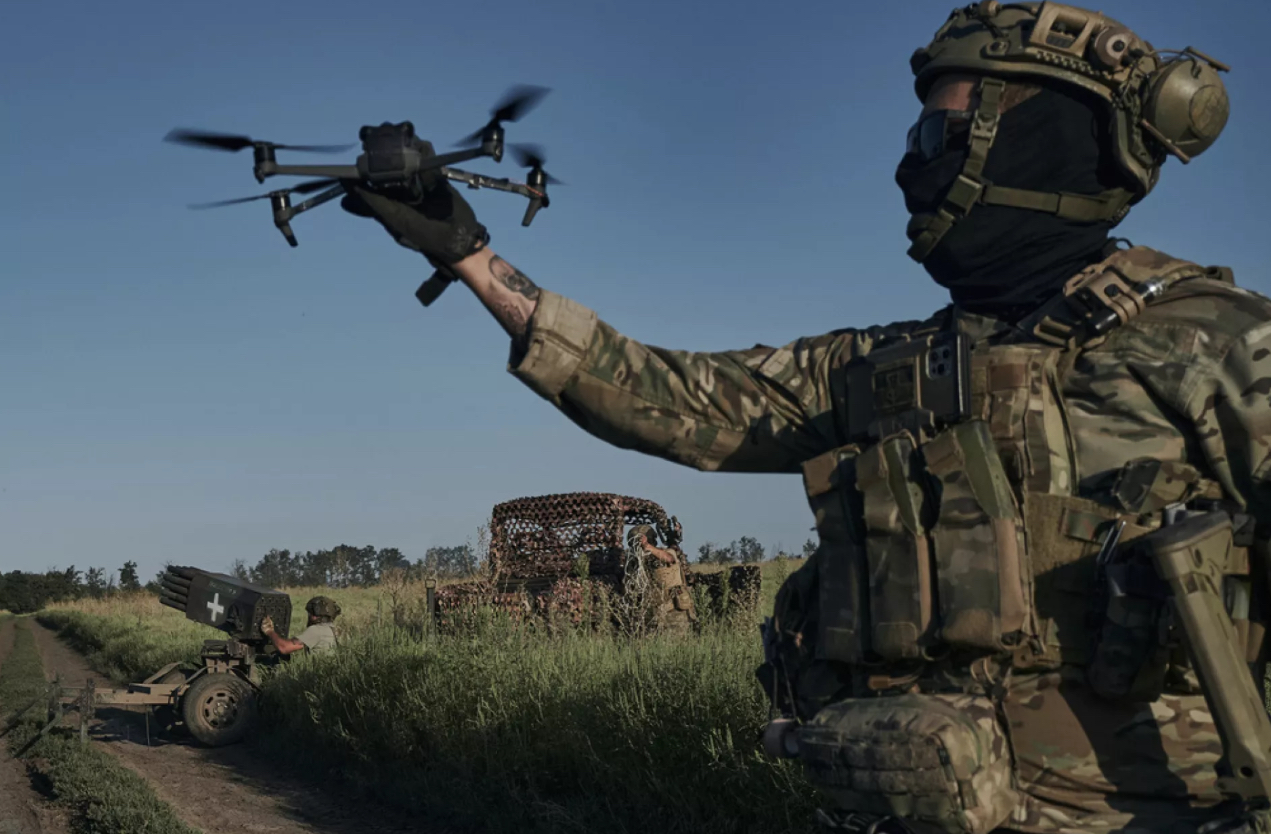In a move that signals a dramatic escalation of the artificial intelligence arms race, OpenAI and NVIDIA have announced a landmark strategic partnership. The deal involves the joint deployment of an unprecedented 10 gigawatts of AI data centers, powered by millions of NVIDIA GPUs. To facilitate this colossal undertaking, NVIDIA will invest up to $100 billion in OpenAI. This partnership is more than a simple supply agreement; it represents a fundamental strategic pivot for NVIDIA, transforming the chipmaker from the AI industry’s neutral arms dealer into a direct stakeholder in the success of a single frontier lab. This report analyzes the deal’s immense scale, its impact on the competitive landscape, NVIDIA’s strategic evolution, and the significant execution risks that lie ahead.
The Anatomy of a Landmark Deal The sheer scale of the OpenAI-NVIDIA initiative redefines the concept of AI infrastructure. The planned 10 gigawatts of power capacity is a staggering figure, difficult to contextualize without real-world comparisons. This level of energy is sufficient to power between seven and nine million homes, equivalent to the output of five Hoover Dams or ten large-scale nuclear reactors.
The project dwarfs existing and previously announced AI supercomputers. For perspective, it is approximately eight times larger than the current compute cluster powering xAI’s Grok models and double the size of the ambitious 5-gigawatt “Stargate” project previously announced by OpenAI and Microsoft.
The rollout is slated to begin in the second half of 2026, with the deployment of the first gigawatt of systems built on NVIDIA’s next-generation “Vera Rubin” platform. NVIDIA’s commitment of up to $100 billion will be progressive, with capital being invested as each gigawatt of capacity is successfully brought online. This structure suggests a milestone-based approach, tying NVIDIA’s investment directly to the tangible expansion of OpenAI’s computational power.
Redrawing the Competitive Map This deal is a direct response to the rapidly intensifying competition for computational supremacy in the AI sector. Analysis from industry-watching firm SemiAnalysis shows that competitors, most notably Elon Musk’s xAI, have been closing the compute gap with OpenAI at a ferocious pace. xAI’s “Colossus 2” project was built from zero to 200 megawatts in a remarkable six months, showcasing an agility and speed in deployment that has set a new industry benchmark.
By announcing a 10-gigawatt build, OpenAI and NVIDIA are not just aiming to retake the lead but to create a computational moat that competitors will find exceedingly difficult to cross. The move effectively throws down the gauntlet to rivals like Google, Amazon/Anthropic, and Meta, forcing them to reconsider the scale of their own infrastructure investments if they wish to remain at the frontier of AI development. The central thesis driving this capital allocation is the continued belief in “scaling laws”—the principle that larger-scale models trained on more powerful hardware will predictably yield more capable and intelligent AI systems.
NVIDIA’s Strategic Pivot: From Arms Dealer to Kingmaker Perhaps the most significant business implication of this deal is the fundamental shift in NVIDIA’s corporate strategy. For years, NVIDIA has been lauded as the primary beneficiary of the AI gold rush, operating as the indispensable “shovel seller.” The company supplied the critical GPU hardware to all players, ensuring handsome profits regardless of which AI lab achieved the next breakthrough. Its success was not tied to the performance of any single AI model.
This $100 billion investment commitment shatters that narrative. NVIDIA is no longer a neutral supplier; it is placing a massive, directional bet on OpenAI. Its financial success in this venture is now directly tethered to OpenAI’s ability to translate this monumental compute power into commercially viable products and, ultimately, a return on investment. If OpenAI’s models fail to advance or generate significant economic value, the value of NVIDIA’s investment will be directly impaired. This move transforms NVIDIA from a hardware vendor into a deeply integrated partner in the high-stakes race to build Artificial General Intelligence (AGI), fundamentally altering its risk profile and its strategic position within the ecosystem.
The Gigawatt Gauntlet: Execution Risks and Unanswered Questions An announcement of this magnitude is one thing; execution is another entirely. The project faces immense logistical, engineering, and financial hurdles that cannot be understated.
- Power Sourcing: The primary challenge is securing 10 gigawatts of stable, reliable power. This is an astronomical amount of energy that cannot simply be pulled from an existing grid. Competitor xAI addressed this by vertically integrating its power supply, acquiring and developing a gigawatt-scale energy hub in Mississippi to power its data center in neighboring Tennessee. OpenAI and NVIDIA’s plan for powering their new infrastructure remains the single biggest unanswered question.
- Location and Speed: The physical location for such a massive project is a critical decision, with implications for energy access, climate, data sovereignty, and geopolitics. Furthermore, the project’s success will depend on its ability to be built out rapidly to maintain a competitive edge, a feat that becomes exponentially more complex at this scale.
- Financial Structure: Critical details of the partnership have not yet been finalized. The term “investing” is ambiguous. It is unclear whether NVIDIA will receive an equity stake in OpenAI, a share of future revenues, or some other form of return. The structure of this deal will be a key point of interest for investors seeking to understand the precise nature of NVIDIA’s exposure and potential upside.
The ROI of Compute: Driving Future Growth The justification for this unprecedented capital expenditure lies in the development of next-generation, compute-intensive AI products. While large language models are a core focus, much of this new capacity will likely be directed toward multimodal systems, particularly advanced video generation.
Speculation is already mounting that a “Sora 2” is on the horizon. Past launches of visually-oriented AI products, such as Google’s Nano Banana and OpenAI’s Jib-ified image generator, have proven to be powerful engines for user acquisition, driving viral spikes in sign-ups and platform usage. These launches “melted” existing GPU infrastructure, highlighting the insatiable demand for such capabilities. By investing in a 10-gigawatt foundation, OpenAI is preparing to not only train these advanced models but also to serve them at a global scale, positioning itself to capture the next wave of AI adoption.
Disclaimer: Important Legal and Regulatory Information
This report is for informational purposes only and should not be construed as financial, investment, legal, tax, or professional advice. The views expressed are purely analytical in nature and do not constitute financial guidance, investment recommendations, or a solicitation to buy, sell, or hold any financial instrument, including but not limited to commodities, securities, derivatives, or cryptocurrencies. No part of this publication should be relied upon for financial or investment decisions, and readers should consult a qualified financial advisor or regulated professional before making any decisions. Bretalon LTD is not authorized or regulated by the UK Financial Conduct Authority (FCA) or any other regulatory body and does not conduct activities requiring authorization under the Financial Services and Markets Act 2000 (FSMA), the FCA Handbook, or any equivalent legislation. We do not provide financial intermediation, investment services or portfolio management services. Any references to market conditions, asset performance, or financial trends are purely informational and nothing in this report should be interpreted as an offer, inducement, invitation, or recommendation to engage in any investment activity or transaction. Bretalon LTD and its affiliates accept no liability for any direct, indirect, incidental, consequential, or punitive damages arising from the use of, reliance on, or inability to use this report. No fiduciary duty, client-advisor relationship, or obligation is formed by accessing this publication, and the information herein is subject to change at any time without notice. External links and references included are for informational purposes only, and Bretalon LTD is not responsible for the content, accuracy, or availability of third-party sources. This report is the intellectual property of Bretalon LTD, and unauthorized reproduction, distribution, modification, resale, or commercial use is strictly prohibited. Limited personal, non-commercial use is permitted, but any unauthorized modifications or attributions are expressly forbidden. By accessing this report, you acknowledge and agree to these terms-if you do not accept them, you should disregard this publication in its entirety.



